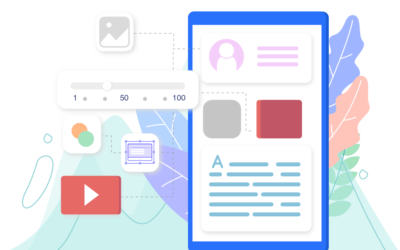Most of us have heard of or perhaps even taken part in dropshipping. However, lately, especially during the coronavirus pandemic, drop servicing has become the new go-to business model for entrepreneurs. To find out more about it, keep on reading, as I’ll explain it in the simplest manner possible and tell you how to start drop-sourcing from the comfort of your own home.
What Is Drop Servicing and How Does It Work?
As I mentioned, drop servicing is similar to drop shipping. The main difference lies in what is being sold to customers. While dropshipping focuses on physical products, drop-servicing tends to sell services instead. In other words, a drop servicer hires freelancers who offer a certain kind of service, promotes them on their website, and manage the payments, acting as a middleman in the process.
It’s hard to deny the potential that this business model seems to have. It is not only highly profitable but also quite effortless. After all, it allows you to work from home and have flexible business hours. So, it’s no wonder that drop servicing has gained so much traction lately.
What Is Shopify?
You don’t need much to take up drop servicing and start earning big money. In order to put your plans into action, the only thing you need is a platform. And what better platform to utilize than Shopify?
Shopify is one of the most popular e-commerce sites out there, and for a good reason. It lets you create an attractive storefront for whatever it is you’re selling and easily manage your orders and payments. Personally, I found their drag-and-drop website builder quite intuitive. So, if you’re like me and you don’t have any coding skills whatsoever, don’t worry!
How to Build a Successful Drop Service Business with Shopify
Next, I’ll tell you how you can start drop-sourcing. I’ve divided the process into six easy-to-follow steps:
1. Picking the Services and Freelancers to Outsource
This step may be the most important, as well as the most difficult. Essentially, it could determine your success later on. I suggest you do thorough research first and find a niche that has the most potential to bring you profit. Tools like Google Trends and Ahrefs can help you do that.
Basically, you should choose a niche that is highly sought-after at the moment, but also has somewhat low competition, as that increases your chance of success. Some of the most popular services currently include digital marketing, programming, graphic design, etc.
Next, you’ll need to find freelancers, a.k.a. the people who will perform the services you’re looking to sell. They can be found all over the Internet, but I suggest you begin your search with platforms like Fiverr or Upwork. Both of these host hundreds of thousands of freelancers, so you’re bound to find someone who suits your business model. Of course, you should pick those who have good ratings and reviews, but you might also want to have a few alternatives, just in case.
Once you’ve found them, contact the freelancers, politely wording your business proposal. I suggest you emphasize the benefits that such a collaboration would have for them. For instance, promise to take some load off their hands by dealing with the boring aspects of the process, such as clients, payments, and marketing. That would allow the freelancer to focus on their primary field of interest and thus provide the best service possible.
2. Registering for Shopify
For starters, you’ll need to go to Shopify.com and create your account. There are three pricing options:
- Basic ($29)
- Shopify ($79)
- Advanced ($299)
Choose your pricing plan, enter your credit card details and that’s it — you’ll have your own Shopify storefront. In my opinion, while it’s nice to have all the extra features that the more expensive payment options offer, as a beginner, you don’t really need them. The Basic plan will be more than enough to get you started in drop sourcing. Also, if you need to, you can always upgrade later on.
In case you’re still not ready to buy, there’s also a 14-day free trial that you can use to test the waters. The best part is that you don’t even need to enter your credit card details in order to get it. Simply enter your email address, password, and store name, and you can start exploring the platform. However, do keep in mind that you’ll have limited features and options. For instance, you won’t be able to accept any real orders or payments in the trial version, but you will get familiar with how Shopify works.
3. Setting up the Store
The next thing you should do is come up with a catchy name that you’ll use for your store and in your domain (e.g. YourName.myshopify.com). If you want, you can also purchase your own unique domain within Shopify.
Besides that, you should also spend some time making the store look attractive to customers. For instance, choose a theme to best fit the niche you’ve picked. Shopify offers a bunch of free themes, so you’ll definitely find something suitable for your business.
Also, if you spend a bit more, you can get one of the premium themes. They are not only better looking but also much more responsive. What’s more, they offer many additional features and functions that can help you manage your business.
4. Managing Orders and Payments
Once you’ve done all that, you can start setting up the specifics of your business.
Go to the Products section and enter all the required information. Come up with a name and an informative description of the services. Of course, this information needs to concur with what the freelancer is actually offering. I suggest you also add some pictures for the sake of transparency. Also, don’t forget to uncheck the option that says ‘This is a physical product.’
As far as pricing is concerned, make sure it’s realistic — neither too high nor too low. Do some research and find out how much others in the field are charging for their services. Make sure everyone is getting their fair share, including yourself. There are multiple payment options you can choose from and you can also add discounts if you want to.
When a customer places an order, you’ll need to send them some kind of confirmation, preferably via email. You can create your own message in the Notifications tab, under Order Confirmation. Also, I advise you to create a Google Form where your customers can enter their details. Provide the link in the confirmation email and politely ask your customers to fill it out. You might also want to mention that in the description. I hope Shopify will consider adding a feature to make this process easier in the future, but for now, this is the best way to gather your clients’ information.
In addition, make sure you provide your contact information, so that clients can reach you in case there’s an issue with an order.
5. Legal Documents
Don’t forget to add all the necessary legal documents to your store, such as the Terms of Service, Refund Policy, etc. Doing this will ensure that your business appears reliable and transparent to customers, as opposed to looking shady or like a scam. Simply go to Settings, then Legal. You can either use the generic template text or come up with your own, it’s up to you.
6. Marketing
One of the most important aspects of drop sourcing is promoting your business and driving traffic to your store. What’s the purpose of a gorgeous storefront if there are no buyers to see it?
Obviously, there are many ways you can promote your business, so it’s completely up to you how you do it. Social media (i.e., Instagram, Facebook, YouTube) is a good place to start, as it’s free. However, once your business takes off, you might also want to consider paid advertisements.
In my opinion, if you’re a beginner, it’s best to sign up for a digital marketing course, but you can also consult some tutorials on YouTube or elsewhere.
Final Thoughts
My last piece of advice for newcomers to drop servicing is ‘Be patient.’ Although you can create your store in just a few hours, that doesn’t mean you’ll start earning right away. Firstly, you’ll need to spend some time researching and finding quality services to drop. Only then can you even start thinking about gains. Secondly, there’s also a lot of trial-and-error learning involved. Still, if you know what you’re doing and what you should pay attention to, the road to success will be that much smoother and faster. I hope this tutorial contributes to that at least one bit.




